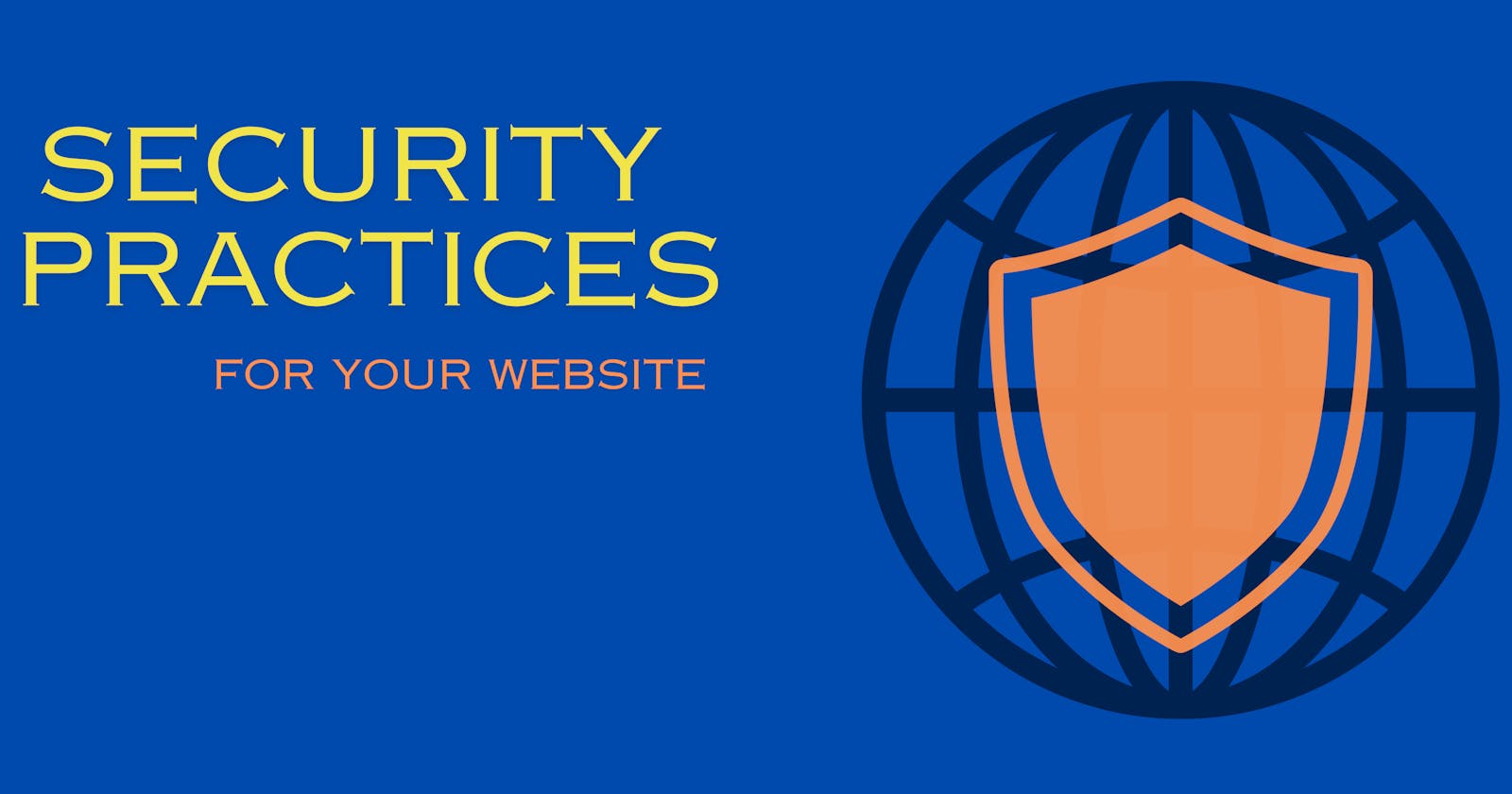We are living in an Information Era or the Digital Age. Major part of things happening around us are based on transmitting, accessing and manipulating information.
Websites play a very large crucial role, serving as a foundational platform in sharing and accessing all sorts of data around the world. Most of the major IT fortune 500s rose up from the ground harnessing the power of a website in economical, financial and technological realms.
In such an environment, it becomes important to protect and securing data and information through any medium it is being shared from. Here discussed are some of the practices a website development should follow through to ensure it's data safety.
Beware of the input fields
Input fields are the best friend of any attacker who is constantly searching a way through your system to just barge into. Hence, it becomes essential to protect the gate which let's anyone entering your system.
Some of the famous known attacks for corrupting a system's input are -
SQL Injection (Injecting malicious SQL command)
Cross-Site Scripting (Injecting such scripts that is executed by the browser and affects all the users of the website)
Long password DOS attack (Writing long passwords can make the hash functionality compute for a very long time.)
Change face while traveling
Always assume that any attacker can interrupt at any point in your network. Such case can arise a need to encrypt the data while it is being sent or received. Many algorithms can provide for this task.
Even when storing data in database, it needs to stay encrypted. It is best to keep the data encrypted until it is not in front of user's eyes. Only that way can you ensure the best security.
User Authentication
Anybody who is visiting your site should be verified and authenticated top-to-bottom. Layered authentications, re-authentications like approaches works best towards keeping the user always genuine and verified.
Certificates : because encryption is overrated Right :)
Certificates are essential components of modern website security, serving as digital credentials that authenticate the identity of a website and encrypt data transmitted between the user's browser and the web server.
One of the primary functions of certificates is to facilitate secure communication through the implementation of SSL/TLS protocols, which establish an encrypted connection between the user and the website. This encryption ensures that sensitive information, such as login credentials, payment details, and personal data, remains confidential and cannot be intercepted or deciphered by unauthorized parties. By encrypting data in transit, certificates play a crucial role in protecting user privacy and preventing data breaches.
Constantly think the other way
Testing and adopting the mindset of an attacker are essential strategies for staying ahead of the ever-evolving landscape of cyber threats. By regularly conducting comprehensive security assessments and penetration testing, organizations can proactively identify and address vulnerabilities in their systems and applications before malicious actors exploit them. Additionally, adopting an adversarial perspective allows security professionals to anticipate potential attack vectors and devise effective defense mechanisms to mitigate risks.
By continuously challenging their own defenses and thinking like potential adversaries, organizations can maintain a robust security posture and effectively protect their assets against emerging threats in today's dynamic cybersecurity environment.
These were some of the basic security practices for developers like me, you and anybody out there. Gain some hands-on knowledge and apply it in any small or big project you craft.
Major inspiration, must read - https://www.lrswebsolutions.com/Blog/Posts/32/Website-Security/11-Best-Practices-for-Developing-Secure-Web-Applications/blog-post/
